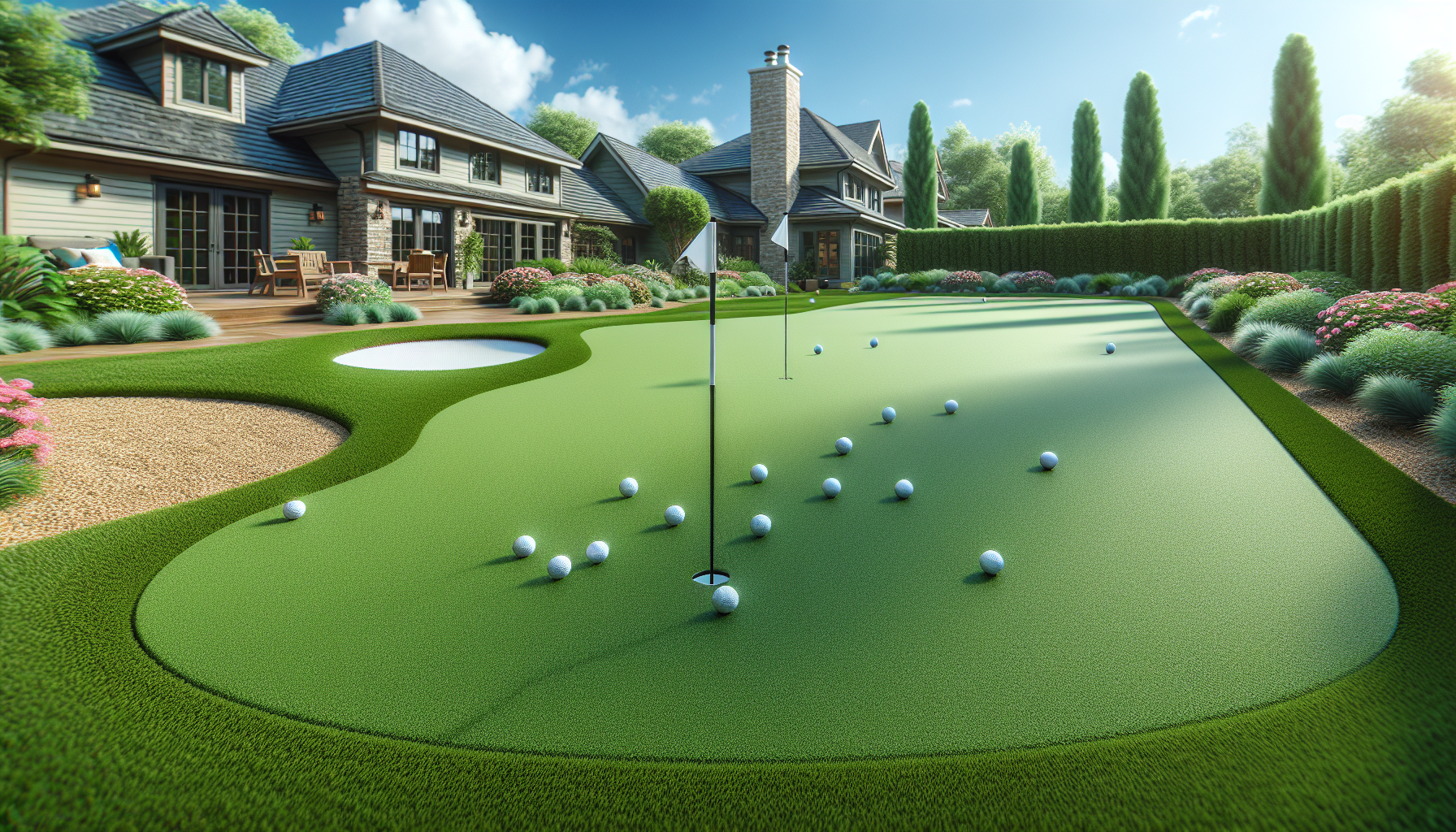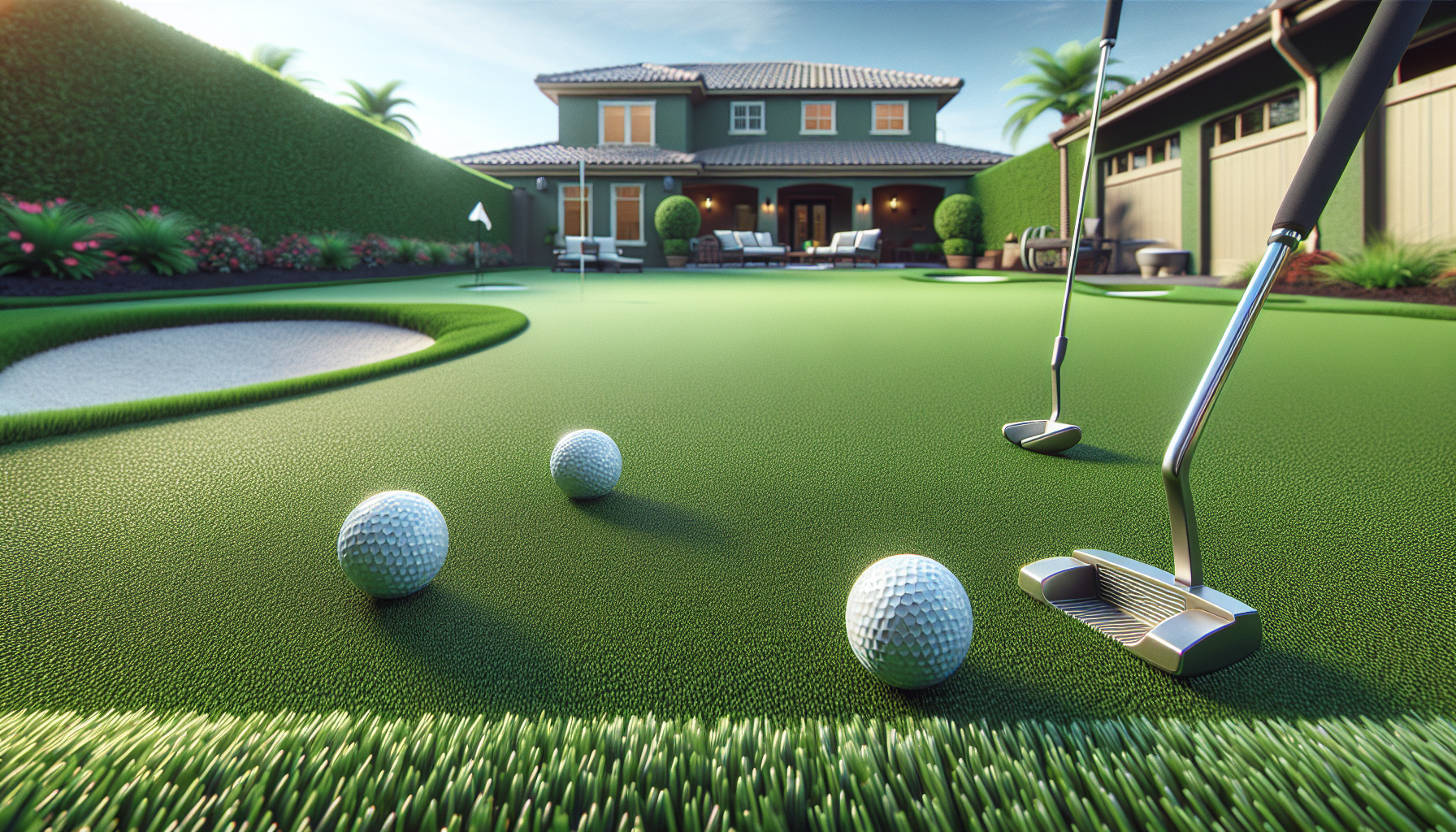
Artificial grass, also known as synthetic turf, offers numerous benefits for homeowners and businesses, such as reduced maintenance and a prolonged lifespan. One important aspect of artificial grass installation is the use of sand as an infill material.
Sand provides stability, durability, and enhances the natural-looking aesthetics of the synthetic turf.
It also plays a crucial role in the proper drainage system, preventing water from pooling on the surface.
While there are alternatives to using sand, such as rubber or organic infills, it’s important to consider factors like local climate, usage, and desired aesthetics when deciding on the infill material to be used. Different types of infill material can be used during the installation of synthetic turf.
Necessity of sand in artificial grass installation
One important aspect to consider when installing artificial grass is the use of sand. Sand plays a crucial role in creating a stable and durable surface for synthetic lawns.
By using sand as an infill material, the artificial grass gains several benefits that contribute to its overall performance and aesthetics.
Firstly, sand infill improves the stability of the artificial surface by weighing it down.
This prevents the artificial grass from shifting or wrinkling, ensuring a smooth and even appearance. The added weight of the sand reduces the risk of tripping or falling, making it safer for users.
Sand aids in drainage by enhancing the artificial surface’s ability to disperse excess water. This prevents water accumulation, which can lead to potential damage on an artificial surface, synthetic lawn, or artificial grass.

Benefits of infill material in synthetic turf
Infill material is instrumental in maximizing the advantages of synthetic turf. One of the key advantages is improved safety and performance.
The infill material provides increased shock absorption, reducing the risk of injuries on the grass surface.
It also offers enhanced traction, stability, and optimal drainage that allows players to perform at their best on the synthetic turf.
The use of infill material ensures superior ball bounce and a consistent playing surface, mimicking the feel of natural grass.
Another important benefit is the enhanced durability and longevity of synthetic turf.
Infill material protects against wear and tear, preventing turf matting and flattening. It also improves resistance to extreme weather conditions, ensuring the longevity of the sand base and fake grass. With the integration of the grass surface, sand base, and fake grass, the infill provides a seamless and natural-looking playing field.
Differences between artificial and natural grass surfaces
Understanding the differences between artificial and natural grass surfaces is crucial when deciding which option to choose for your landscaping needs. One key aspect to consider is the appearance and aesthetics of each surface.
Artificial grass has made significant advancements in mimicking the look of natural grass, but some may argue that nothing can truly compare to the real thing.
Weather and maintenance can impact the appearance of both surfaces, with natural grass requiring more upkeep to keep it looking lush and green.
Another factor to consider is durability and lifespan. Natural grass has a limited lifespan, especially in high traffic areas or harsh weather conditions.
On the other hand, artificial grass can withstand heavy foot traffic and adverse weather conditions. It is important to note that the durability and lifespan of both surfaces can be affected by various factors, including grass infill, turf infill, and grass underlayment.
Installation of synthetic lawn without sand base
The sentence provided is already a complete thought, so no updates are needed. Understanding different installation methods is essential for making an informed decision.
Sandless installation, also known as grass substitute, provides numerous advantages, such as the elimination of sand-related issues, reduced maintenance and cleaning requirements, and improved drainage efficiency.
The step-by-step guide to sandless installation includes site preparation, installing a weed barrier and edging material, applying a base layer of decomposed granite, installing the synthetic turf, securing edges and seams, and adding infill material.
Common considerations and challenges, including grass replacement, proper drainage planning, selecting appropriate infill materials, and dealing with potential unevenness, should be taken into account during the installation process. When it comes to maintenance for sandless synthetic lawns, frequent brushing is essential to keep the grass substitute, grass replacement, or grass bed looking its best.
Advantages of Sandless Installation
- Sandless installation eliminates issues related to sand.
- Reduced maintenance and cleaning requirements with sandless installation.
- Improved drainage efficiency with grass substitute.
Role of grass infill in maintaining synthetic grass
The first sentence is already a complete thought, and no changes are needed. The sentence is: Grass infill plays a crucial role in maintaining synthetic grass, contributing to its stability, durability, and overall performance.
The presence of grass infill greatly enhances the shock absorption capability of the artificial turf, reducing the risk of injuries.
It provides a more natural look and feel to the synthetic grass, making it almost indistinguishable from real grass.
One of the key benefits of grass infill is its cooling effect, which is especially important during hot weather. The infill material helps to dissipate heat, preventing the synthetic grass from becoming uncomfortably hot, thus ensuring a more enjoyable experience for users.
Grass infill helps to maintain the temperature of the turf substitute at a more bearable level, making it suitable for extended periods of use. To ensure the proper maintenance of grass infill, it is essential to understand the turf substitute, grass bedding, sand layer, and their respective roles in preserving the longevity and quality of the turf.
Replacing natural grass with sandfree artificial grass
Is becoming increasingly popular due to its numerous benefits and the maintenance issues associated with natural grass. Unlike natural grass, sandfree artificial grass does not require sand infill, eliminating the problem of sand in natural grass and its maintenance.
This alternative provides a low-maintenance solution, reducing the need for constant upkeep and saving time and effort.
Additionally, sandfree artificial grass offers reduced allergens and pests, improving the overall environment.
It also boasts improved durability and lifespan, ensuring a long-lasting and attractive grass layer. The installation process involves preparing the surface, using a sand base system, and securing the grass underlayer. Common misconceptions about sand and artificial grass layer, sand base system, and grass underlayer are often due to a lack of awareness and understanding of their benefits and functionality.
Benefits of Sandfree Artificial Grass
- Sandfree artificial grass eliminates the need for sand infill, reducing maintenance issues associated with natural grass.
- It provides a low-maintenance solution, saving time and effort on constant upkeep.
- Sandfree artificial grass offers reduced allergens and pests, creating a healthier environment.
- It boasts improved durability and lifespan, ensuring a long-lasting and attractive grass layer.
Advantages of sand base system for fake grass
Artificial grass has gained popularity recently because of its low maintenance and beautiful appearance. One factor that greatly contributes to the performance and durability of fake grass is the sand base system.
This innovative grass underlayment system, which includes a turf underlayment, offers several advantages for synthetic grass surfaces.
One of the key benefits of using a sand base system is the improved drainage it provides for the synthetic grass surface.
The sand acts as a permeable layer that allows water to pass through efficiently, preventing waterlogging and reducing the risk of mold or mildew growth. This ensures a dry and healthy turf underlayment and helps to maintain the quality of the synthetic grass.
In addition to better drainage, the sand base system also enhances stability. By adding weight and anchoring, the grass underlayment system provides a stable base for the turf underlayment, ensuring a secure and durable synthetic grass surface.
Contribution of grass underlayment system to synthetic turf longevity
The contribution of a grass underlayment system to synthetic turf longevity is significant. Synthetic turf, also known as artificial grass, has gained immense popularity in various applications, including sports fields and residential lawns.
To ensure its durability and long lifespan, a grass underlayment system, also known as turf underlay, is crucial.
The grass underlayment system plays a vital role in enhancing the performance of synthetic turf by providing a stable and supportive base for the synthetic lawn bed or turf bedding.
This underlayment system offers several benefits that contribute to the longevity of synthetic turf.
One of the key advantages of a grass underlayment system, such as turf underlay, is its ability to enhance drainage. Efficient drainage is ensured by using turf underlay, synthetic lawn bed, and turf bedding.
Benefits of a Grass Underlayment System for Synthetic Turf
- Improved longevity: The grass underlayment system significantly contributes to the longevity of synthetic turf, ensuring its durability and long lifespan.
- Enhanced performance: By providing a stable and supportive base, the underlayment system enhances the performance of synthetic turf, creating a solid foundation for the synthetic lawn bed or turf bedding.
- Efficient drainage: A key advantage of a grass underlayment system is its ability to enhance drainage. The use of turf underlay, synthetic lawn bed, and turf bedding ensures efficient water drainage, preventing water accumulation and potential damage to the synthetic turf.
- Popularity in various applications: Synthetic turf, also known as artificial grass, has gained immense popularity in various applications, including sports fields and residential lawns. The grass underlayment system is crucial to maintaining its popularity by ensuring its longevity and performance.
Secure Your Fake Grass Expert Tips for a Beautiful Lawn
Grass Removal Necessary Before Installing Artificial Grass
